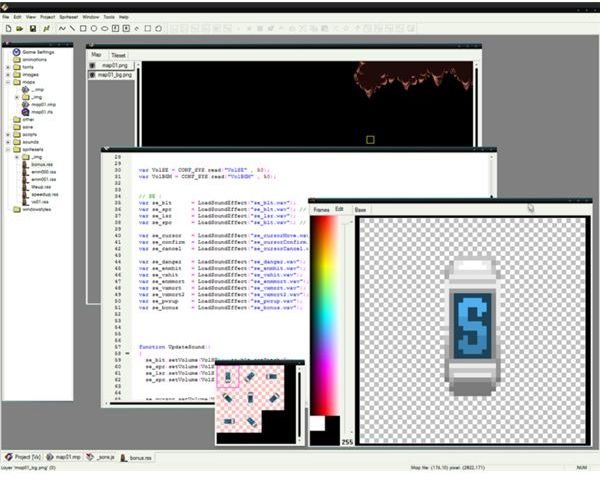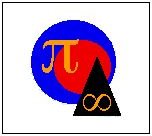10 Revenue Recognition Methods Used in Business Accounting: How Should You Record Your Income?
Why So Many Methods?
A survey of accounting recognition methods and its results provide a classic example of how complex commerce and the existing accounting systems have become. Staying within the norms or the standards has resulted in certain inadequacies in meeting the “matching principle” as criterion. There are about 10 methods of revenue recognition used, wherein each method aims to provide a standardized procedure for realizing profits, which are used according to the industry’s method of transacting its business.
The present-day economy is so diverse that even the IRS and SEC are at loggerheads about revenue recognition methods. Considering the clamor for global competitiveness of US industries in the investment market, the International Financial Reporting Standards (IFRS) has likewise entered the scene, bringing another set of rules different to US GAAP’s revenue recognition rules.
Observers are now describing this present situation as an accounting crisis, and the best advice they could give accountants-in-charge is to make a careful assessment of all accounting revenue recognition methods. They have to decide on the most appropriate and applicable methods for their respective industry’s scenario.
However, the accountant should keep in mind the following basic rules when evaluating the method to be used for recognizing income:
- Revenue recognized at point of delivery;
- Revenue recognized at point of acceptance;
- Recognizing revenue at point of payment or receipt of cash;
Ten Accounting Revenue Recognition Methods

(1) Recognizing revenues under a Cash Sales method
This is where simple buying and selling transactions transpire and accounting procedures for income realization are basic. Not all cash transactions, however, qualify under this method.
(2) Revenue recognition using the Accrual method
There are two aspects where the system of realizing income should be based on these standards:
The seller’s position as recipient of advance payment before delivery makes the seller liable until such time that the goods or services are delivered. As a liability, the Unearned Revenue account will be used and will be properly classified as income at point of delivery.
There is also the side of the buyer who made the advance payment before the delivery of goods or services. The prepayment is initially recorded as a prepaid asset but will later be classified as expense when the goods are delivered or services are performed and accepted. Although this aspect refers to expenses, the latter is crucial in determining the amount of revenue gained from the incurrence or acquisition. The act of accepting the goods or services consummates the transaction.
(3) Revenue recognition for Installment Sales method
This type of selling is where delivery of goods comes ahead of payment, and it creates a receivable instead of increasing cash. The receivable will be extinguished by a series of regular payments, and revenue recognition is allowed for every installment payment received. Only the paid portion of the receivable will be recognized as revenue from installment sales, and a distinction from revenue from cash sales should be maintained.
The related expenses for installment sales will be assigned in proportion to the revenue actually gained, which could result in minimal profits or even loss at the time of reporting.
An alternative method is to match the amount of monetary benefits earned against cost incurred until such time that the entire cost has been fully recovered. Thereafter, all succeeding installment payments received are recognized as purely revenues.
(4) Recognizing revenue under the Completed Contract method
This method is applicable for long-term projects where the amount of revenue gained by the service provider can be established only after the project has been completed.
In this type of long-term projects, the costs incurred by the contractor cannot be matched against the advance payments received. Materials purchased may still be held as assets; hence they cannot be appropriated to match the cash collected. Doing so could distort the presentation of income in future periods.
Please continue on page 2 for more on Accounting Revenue Recognition Methods
Continuation: Accounting Revenue Recognition Methods

(5) Recognizing revenue under the Percentage of Completion method
This method is often preferred over the completed contract method since costs are properly identified and segregated to maintain proper monitoring. The aim is to make sure that the project is still operating within the projected budget.
Any variables or losses suffered due to unforeseen economic events will be charged against the portion considered as unearned revenue. Hence the revenue subsequently recognized will be adjusted accordingly.
In addition, the project performance is specifically identified and the corresponding revenue received will be protected by the agreement between the contracting parties. Any additions to the portion completed will cover another formal deed of agreement.
(6) Revenue recognition under Brokerage Agreement
There are brokers who handle all their customers’ transactions as if they all inure to the business, which tends to reflect substantial amounts in terms of Gross Sales but results to very little gross profit. This method to be proper should observe certain proprietary rules if the broker intends to work clearly along the guidelines of both the IRS and the SEC.
Purchases shall be made from out of the broker’s funds but will be accompanied by an agreement between broker and customer about reimbursements, including service charges, administrative costs, and other related expenses like transportation or fees paid. This means there will be no demand for substantial advance payment just to perform the brokerage service.
In doing so, the broker is taking the risks involved in conducting his business; risks may include defective merchandise or non-reimbursements from customers that could entail additional costs for lawsuits.
This way, the broker retains title to the goods procured on behalf of the client and the transfer of both title and ownership is only upon receipt of the reimbursements, professional fees, and charges due to the broker. Accounting for revenue recognition method can be clearly defined by the receipt of cash at this point and will be able to stand scrutiny from both the IRS and SEC.
In the event that the customer reneges on his commitment, the broker has the right to sell the procured goods to recover his cost as well as profit from it to allow loss or revenue realization. At the same time, the broker can still sue the customer because the selling of the goods did not extinguish the client’s liability for breach of contract.
(7) Revenue recognition under Appreciation method
Appreciation refers to the increase in value of the products or goods held by the company for a main trade. Real estate, for one, includes inventory of property that appreciates in value but is not allowed by any rule to recognize any increment unless the property is sold.
Through this method, there is no other way for the real estate agent to lessen the gain recognized from selling the property sold at its appreciated value. The costs of maintaining the property could likewise be treated as capitalized costs and will be properly treated as expenses once the property is sold at its appreciated price. Thus the increment and the capitalized costs will all be taken into account upon revenue recognition which is at the point of delivery and acceptance of title as well as the receipt of payment.
Please continue on page 3 for more on Accounting Revenue Recognition Methods
Continuation: Accounting Revenue Recognition Methods

(8) Recognizing revenue under Proportional Performance method
Recognizing profits under this method is a modification of the percentage of completion method, where costs incurred cannot be assigned to a specific portion of the amount completed but instead allow for estimation in order to recognize the gains. This is usually applied by those providing software-related services.
The method requires the identification of the total direct costs necessary to initiate the launching or the commencement of the services to be rendered. Initial revenue recognition is computed by determining the proportion of the launching costs to the costs projected for project completion, mostly manpower costs.
If, for example, the total direct costs to initiate a $100,000 project amount to $10,000, and the total projected project cost is $60,000, the revenue that matches the launching cost can be recognized upon receipt of initial payment from the service contractor. This can be computed as follows:
Proportion of Launching Costs / Total Projected Cost = $10,000 / $60,000 x 100% = 16.67 %
Rather than wait for the entire project to be completed, the revenue earned by the launching costs will be computed as follows:
Contract Price x 16.67% = $100,000 x 16.67% = $16,667
This can now be recognized against the down payment received as conditional to the commencement of the project. Thereafter, the actual costs of IT manpower will be tracked and monitored as it now represents the greater part of the remaining projected costs.
(9) Recognizing revenue under the Deposit method
This method is used for monies held as deposits that are subject to cancellation agreement by both parties. An example to illustrate its application is the advance deposit required by landlords from their renters or lessees. Revenue will be recognized only upon expiration or extinguishment of the contract that binds them.
The landlord initially carries the deposit as a liability. If the contract is not renewed upon its expiration, the deposit amount will be applied as the renter’s final payment for the corresponding unpaid rent or damages if any. The calendar year when the deposit was applied as rent payment will be the year that the income is recognized.
(10) Revenue recognition for Transactions Under Bill & Hold
This method is the least popular since it has been cited as a method used for several fraudulent transactions, often to bloat a company’s assets. Nevertheless, if considered for its features as one of the accounting recognition revenue methods, it’s a system where the customer is billed for a product ordered but will entrust its safekeeping and inventory to the manufacturer, due to lack of adequate or proper storage facility.
Since it is presumed that this arrangement was made at the request of the buyer, there should be specific documents to serve as proof that there is such a request coming from a legitimate legal entity.
The seller has no problem with revenue recognition inasmuch as the products sold are as good as delivered and therefore recognized as income upon receipt of payment. However, the items should be physically removed from the seller’s inventory, and ownership should be acknowledged by the buyer. In addition, the documents covering this transaction should bear a reasonable specific date as to when the actual delivery should take place but as a single undertaking and not on a piecemeal basis.
Summary:
The trend is not just to recognize revenue, but to likewise consider the expenses incurred that match the revenue generated. Expenses for the year, if overlooked, will reflect a higher income. The IRS will not penalize you for this, but the SEC will and it will require you to re-state your financial position so as not to mislead investors. In the same context, the SEC will not penalize you for understating your income but the IRS will, since your tax liability will be affected.
The basis for choosing any one of these accounting revenue recognition methods is the principle of matching revenue and expenses. It may interest the reader to learn more about said principle by reading a separate article, The Matching Principle: Explanation and Examples.
Reference Materials & Image Credit Section
Reference Materials:
Bragg, Stephen M. Accounting Reference Desktop (published by John Wiley & Sons, 2002) — https://books.google.com.ph/books?id=1kh76F2FN7MC&pg=PA220&lpg=PA220&dq=what+are+the+most+common+methods+of+revenue+recognition+used&source=bl&ots=W-lYAzUOY9&sig=zOVLNV5rml34Y_2yXU7FwljBAyg&hl=en&ei=FDWeTLP6MsbIcfavrNsJ&sa=X&oi=book_result&ct=result&resnum=8&ved=0CDgQ6AEwBzgK#v=onepage&q=what%20are%20the%20most%20common%20methods%20of%20revenue%20recognition%20used&f=false
Image Credits Section:
